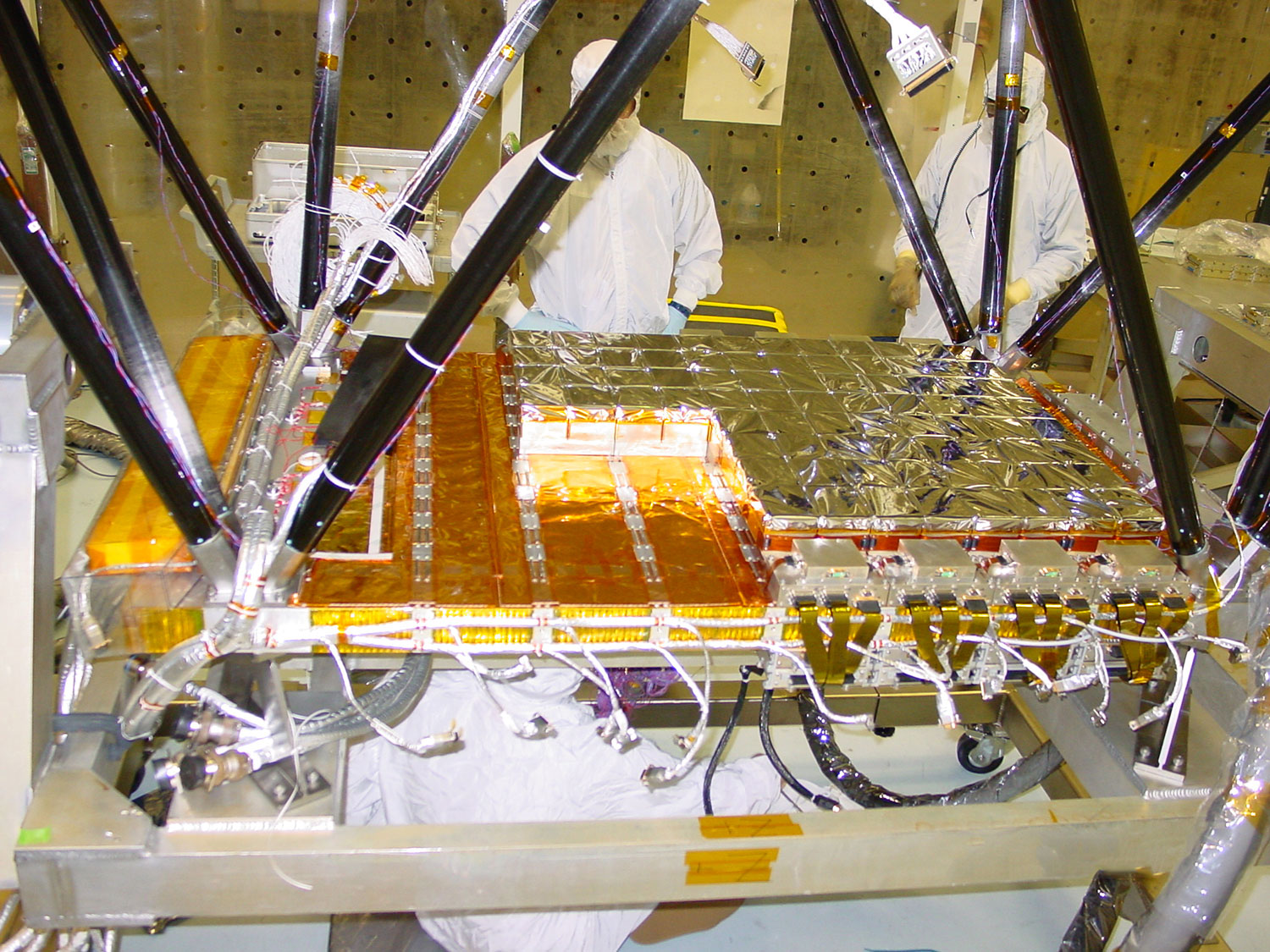Gamma-ray Detectors Introduction

Photo of the Burst Alert Telescope (BAT) on NASA's Swift satellite under construction. (Credit: NASA/Swift)
Gamma rays, like visible light, are made up of packets of energy called photons. However, gamma-ray photons have millions of times more energy than visible light photons. At the same time, sources of cosmic gamma rays are extremely weak (that is, they produce relatively few gamma-ray photons for us to detect near Earth). Like X-ray detection, gamma-ray detection is done photon-by-photon.
Gamma rays are detected by observing the effects they have on matter. A gamma ray can collide with an electron and bounce off it like a billiard ball (Compton scatter) or it can push an electron to a higher energy level (photoelectric ionization). Also, since gamma rays have so much energy, part of this energy can be transformed into matter directly by creating an electron and another particle (called a pair production). All of these interactions cause electrons to move in some way, which basically means that an electric current has been created. These currents can then be amplified and measured to estimate the energy and direction of the original gamma-ray.
Gamma-ray detectors can be placed in two broad classes: spectrometers and imagers.
The first class would typically be called spectrometers or photometers in optical astronomy. These detectors are essentially "light buckets" that focus on a region of the sky containing the object of interest collecting as many photons as possible. These types of detectors generally use scintillators or solid-state detectors to transform the gamma-ray into optical or electronic signals that are recorded.
The second class are detectors which perform the difficult task of gamma-ray imaging. Detectors of this type either rely on the nature of the gamma-ray interaction process, such as pair production or Compton scattering, to calculate the arrival direction of the incoming photon, or they use a device such as a coded-mask to allow an image to be reconstructed.
Text updated: September 2018


